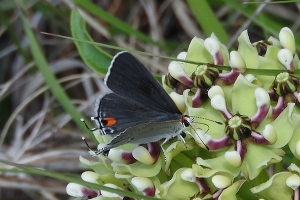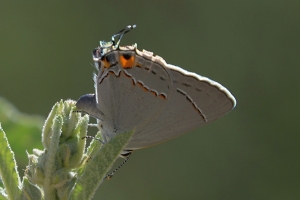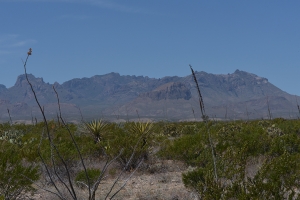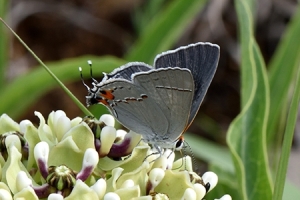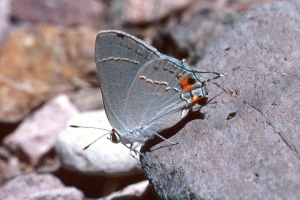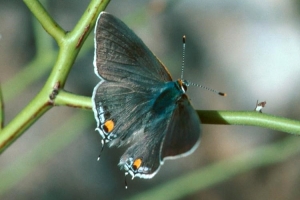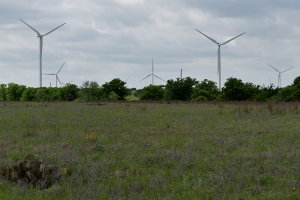

 +10Kontinente:EUNAMASA
+10Kontinente:EUNAMASA1. Lebendfotos
1.1. Falter
1.2. Eiablage
2. Biologie
2.1. Habitat
2.2. Nahrung der Raupe
- [Malvaceae:] Malva neglecta sp. (Weg-Malve)
- [Malvaceae:] Malva parviflora sp. (Kleinbltige Malve)
- [Malvaceae:] Malva rotundifolia (Rundblättrige Malve)
- [Malvaceae:] Malva sp. (Malve)
- [Malvaceae:] Gossypium hirsutum (Behaarte Baumwolle)
- [Malvaceae:] Gossypium sp. (Baumwolle)
- [Malvaceae:] Hibiscus syriacus (Straucheibisch, Garteneibisch)
- [Malvaceae:] Callirhoe leiocarpa
- [Fabaceae:] Lotus corniculatus (Gewöhnlicher Hornklee)
- [Fabaceae:] Acmispon americanus [= Lotus purshianus]
- [Fabaceae:] Trifolium repens (Weiß-Klee)
- [Fabaceae:] Trifolium arvense (Hasen-Klee)
- [Fabaceae:] Trifolium incarnatum (Inkarnat-Klee)
- [Fabaceae:] Lespedeza capitata
- [Fabaceae:] Lespedeza hirta
- [Fabaceae:] Amorpha fruticosa (Bastardindigo)
- [Fabaceae:] Melilotus alba (Weißer Steinklee)
- [Fabaceae:] Medicago sativa (Saat-Luzerne)
- [Fabaceae:] Phaseolus lunatus [= Phaseolus limensis] (Lima-Bohne)
- [Fabaceae:] Phaseolus vulgaris (Garten-Bohne)
- [Fabaceae:] Phaseolus sp. (Bohne)
- [Fabaceae:] Lupinus texensis (Texas-Lupine)
- [Fabaceae:] Vicia sp. (Wicke)
- [Fabaceae:] Astragalus sp. (Tragant)
- [Fabaceae:] Desmodium sp. (Bettlerkraut)
- [Fabaceae:] Sesbania drummondii
- [Fabaceae:] Senna alata [= Cassia alata]
- [Fabaceae:] Amphicarpaea bracteata
- [Euphorbiaceae:] Croton setiger [= Croton setigerus, Eremocarpus setiger, Eremocarpus setigerus] (Malve)
- [Cannabaceae:] Humulus sp. (Hopfen)
- [Boraginaceae:] Cynoglossum officinale (Gewöhnliche Hundszunge)
- [Polygonaceae:] Antigonon leptopus (Korallenwein, Mexikanischer Knöterich)
- [Poaceae:] Zea mays ?? (Mais ??)
Angaben aus Europa fehlen.
Die Raupe scheint recht polyphag zu sein und sich vor allem von Blütenknospen, Blüten und heranreifenden Früchten zu ernähren, nur ausgewachsen auch gelegentlich von Blättern. Als "Cotton Square Borer" und "Bean Lycaenid" gilt sie als Schädling an Baumwolle, Bohnen, aber auch Mais, Hopfen, u.a. [bugguide.net (abgefragt 12. März 2024)] trägt zusammen: "Caterpillar hosts: Flowers and fruits from an almost endless variety of (usually) herbaceous plants; most often from pea (Fabaceae) and mallow (Malvaceae) families including beans (Phaseolus), clovers (Trifolium), cotton (Gossypium), and mallow (Malva)."
Art Shapiro meldet auf seiner [Artseite zu Kalifornien (abgefragt 12. März 2024)]: "This is one of the most polyphagous butterflies known, recorded on host plants in many families. Its most frequent hosts in our area are mallows, including the weedy species of Malva; legumes, including Spanish Lotus (Lotus purshianus), Bird's-Foot Trefoil (Lotus corniculatus), White Clover (Trifolium repens) in lawns, Alfalfa (Medicago sativa) and many others; and Turkey Mullein (Eremocarpus or Croton setigerus, Euphorbiaceae)."
Die Artseite auf [butterfliesofmassachusetts.net (abgefragt 12. März 2024)] geht ausführlicher auf die Art ein: "Gray Hairstreak uses an extensive list of larval host plants, although mainly mallows and legumes. Common hosts in the wild in New York were reported to be rabbit-foot clover (Trifolium arvense), white clover (T. repens), bush clover (Lespedeza capitata), white sweet-clover (Melilotis alba), and Malva neglecta (Shapiro 1974). During the 1995-99 Connecticut Atlas project, eggs or caterpillars were found in the wild on tick-trefoil (Desmodium spp.), alfalfa (Medicago sativa), bush clovers (Lespedeza spp.), and clovers (Trifolium spp.). Many of these commonly-used plants, including most Malva spp., are non-natives which have become naturalized, and to which Gray Hairstreak has adapted. Gray Hairstreak is therefore among the adaptable “Switchers” shown in Table 3, having very early adopted some imported European plants as hosts. A century ago Scudder reported that Mr. A. C. Sprague found the larvae in central Massachusetts on Cynoglossum officinale, and that they were also found on ‘common garden beans” (1899: 854). Neither of these plants is native. Cynoglossum or Hounds Tongue is an introduced species, naturalized from Europe over most of Massachusetts except the southeast coastal plain (McGee and Ahles 1999; Dow Cullina et al., 2011). In southern states, Gray Hairstreak is an occasional agricultural pest on hops, beans, and cotton, the larvae being called Cotton Square Borer in Texas (Scott, 1986). As noted, 18th-century hops cultivation in Massachusetts provided a new New England host plant for the Gray Hairstreak, and may have facilitated its spread north into the state. Hops is a vine native to the southern United States, but it was brought north for use in beer production (see Question Mark)."
Auf [dallasbutterflies.com (abgefragt 12. März 2024)] werden einige weitere Pflanzenarten gelistet: "False Indigo (Amorpha fruticosa), Hog Peanut (Amphicarpaea bracteata), Milk-Vetch (Astragalus spp.), Candlestick Tree (Senna alata), Tick-Clover (Desmodium spp.), Round-Head Bush Clover (Lespedeza capitata), Hairy Bush-Clover (L. hirta), Texas Bluebonnet (Lupinus texensis), Alfalfa (Medicago sativa), White Sweet-Clover (Melilotus albus), Lima Bean (Phaseolus limensis), Garden Bean (P. vulgaris), Rattlebush (Sesbania drummondii), Rabbit-Clover (Trifolium arvense), Crimson Clover (T. incarnatum), White Clover (T. repens), Vetch (Vicia spp.), Rose-of-Sharon (Hibiscus syriacus), Cotton (Gossypium hirsutum), Tall Winecup (Callirhoe leiocarpa), Little Mallow (Malva parviflora), Common Mallow (M. neglecta), Running Mallow (M. rotundifolia)."
[thenalls.net (abgefragt 12. März 2024)] meldet einen Raupenfund an Korallenwein (Antigonon leptopus) und zeigt, wie sich eine grüne Raupe beim Umsetzen auf diese Pflanze pink verfärbt.
Die Liste ist sicher nicht vollständig. Sie zeigt aber, dass in den USA viele von Europa eingebrachte Kultur- und Wildpflanzen genutzt werden - die Art fände also auch in Europa genühgend Nahrungspflanzen.
(Autor: Erwin Rennwald)
3. Weitere Informationen
3.1. Synonyme
- Rusticus melinus Hübner, 1808 [Synonym nach funet.fi]
- Thecla pan Harris, 1833 [Synonym nach funet.fi]
- Thecla favonius Boisduval & Le Conte, [1835] [Synonym nach funet.fi]
- Thecla silenus Doubleday, 1847 [Synonym nach funet.fi]
- Thecla melinus clarionensis Heid, 1933 [Synonym nach funet.fi]
- Strymon caldasensis Salazar, Vélez & Johnson, 1997 [Synonym nach funet.fi]
3.2. Faunistik
Die Art tritt vor allem in den USA sehr verbreitet und bereichs- und zeitweise häufig auf. Ihr Vorkommen reicht im Norden bis in den Süden Kanadas hinein, im Süden bis ins nördliche Südamerika (Kolumbien, Venezuela).
Die Art ist in Europa sicher nicht etabliert, wurde aber wenigstens einmal nach England verschleppt. Agassiz et al. (2013: 112) führen die Art bei den "adventive species" und schreiben zu England: "One probably accidently imported, Pocklington, Yorkshire, 1894: (Bland, 2003). Central American."
(Autor: Erwin Rennwald)
Nach [Global Biodiversity Information Facility] kommt die Art in USA, Kanada, Mexiko, Kolumbien, Costa Rica, Venezuela, Guatemala, Honduras, Namibia?, Brasilien? und Ecuador? vor.
Locus typicus gemäß Erstbeschreibung: Georgien in Florida.
(Ergänzung: Michel Kettner)
3.3. Literatur
- Agassiz, D.J.L., Beavan, S.D. & R.J. Heckford (2013): Checklist of the Lepidoptera of the British Isles. - Royal Entomological Society. 206pp.
- Erstbeschreibung: Hübner, J. (1818): Zuträge zur Sammlung exotischer Schmettlinge [sic], bestehend in Bekundigung einzelner Fliegmuster neuer oder rarer nichteuropäischer Gattungen. Erstes Hundert: 1-32, 8 unpaginated pages, pl. [1]-[35]. Augsburg. [Digitalisat auf archive.org]











